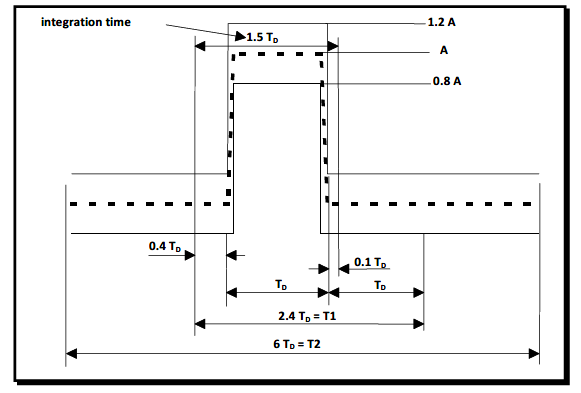This is another part of a series of blog posts concerning the MIL-STD 810 Shock Section, Method 516. This blog was written with reference to MIL-STD-810G w/Change 1 dated 15 April 2014. DES has the experience and expertise to run your MIL-STD-810 test. For more information, please check out our DES shock testing services page and our other MIL-STD-810 shock testing blog articles:
- MIL-STD 810, Method 516, Shock Testing Overview
- MIL-STD 810, Method 516, Shock Testing Procedure I – Functional Shock
- MIL-STD 810, Method 516, Shock Testing Procedure II – Transportation Shock
Procedure III is used to determine what shock conditions will cause a product to stop operating, degrade or fail. The shock magnitudes are systematically increased until a problem occurs. This procedure can be also performed using environmental temperature conditioning.
This article will assume that the fragility shocks expected to be encountered by the product are not complex transients. Therefore, the trapezoidal classical shock pulse, as defined in Figure 516.7-11 and Table 516.7-V from MIL-STD-810, Method 516 would be used for Fragility testing.

Figure 516.7-11. Trapezoidal shock pulse configuration and tolerance limits (for use when shock response spectrum analysis capability is not available in Procedure III – Fragility)

Note 1: Am is dependent upon drop height “h.”
Note 2: “h” is the drop height in SI: m (in) and g=9.81 m/s2(386.09 in/sec2)
Table 516.7-V. Trapezoidal pulse parameters
TD corresponds to the period of the first mounted natural frequency of the item. During fragility testing, TD is held constant. Determination of the fragility level is accomplished by starting at low levels of shock magnitude (Am) and then proceeding to increase the shock magnitude until:
- Failure or degradation of the unit occurs.
- A predefined test goal is reached without failure of the unit under test.
- A critical level of shock is reached whereby increasing the magnitude will cause a failure at a higher level of shock.
An analysis of the product should be performed prior to testing to:
- estimate its anticipated fragility level
- establish a low starting shock level
- estimate the first mode mounted frequency of the materiel in order to specify the pulse duration TD.
The product is normally tested in an un packaged, non-operational condition. The typical procedure when using the trapezoidal classical shock pulse is to first perform calibration shocks using a mass similar in size, weight and center of gravity (CG) of the unit to be tested. Once the desired shock requirements are met with the calibration mass, the mass is removed and the product to be tested is installed on the shock test machine or fixture.
Operation of the test item and inspection for visual damage is performed before/after each shock. If testing along more than one axis is required, then testing in the next axis should be completed before proceeding to the next higher shock magnitude.
For more information on Shock Testing or other testing services, contact DES or call 610.253.6637.